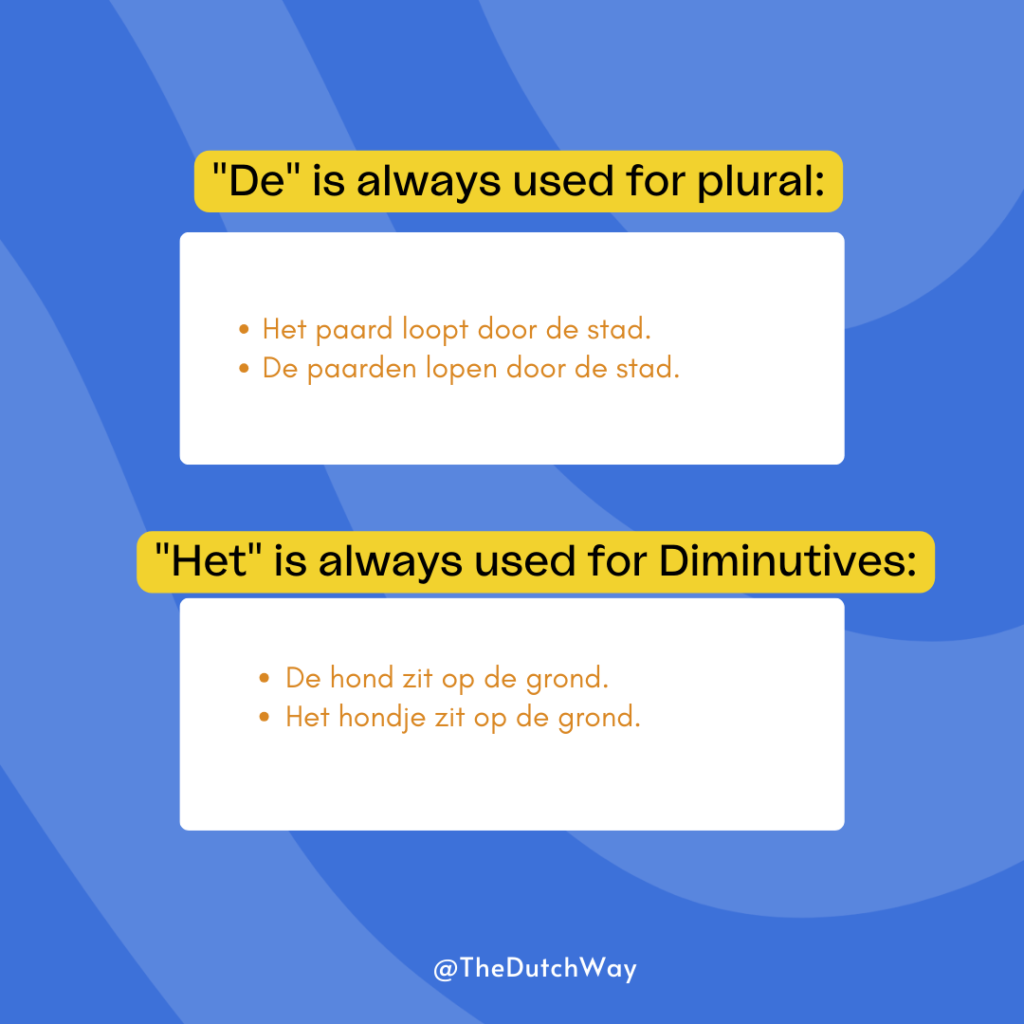
Mastering the Dutch language involves understanding its unique grammar rules, including the use of definite articles like “de” and “het.” While English speakers might find the concept of gendered articles unfamiliar, learning when to use “de” or “het” is essential for fluency in Dutch. In this article, we’ll provide six guidelines to help you navigate the usage of “de” and “het” with confidence.
In Dutch, nouns are classified into two genders: common (de words) and neuter (het words). While there are no strict rules governing gender assignment, certain patterns can guide your understanding. For example, most nouns ending in “-ing” or “-tie” are common gender (de words), while nouns ending in “-um” or “-aat” are often neuter gender (het words).
One effective way to internalize the correct article usage is by learning nouns alongside their respective articles. Create flashcards or lists with nouns categorized by gender, and practice associating each noun with its corresponding article. Regular exposure to noun-article pairings will reinforce your understanding and memory.
While not foolproof, word endings can provide clues about a noun’s gender. For instance, nouns ending in “-heid,” “-te,” or “-ie” are typically common gender (de words), whereas nouns ending in “-je,” “-um,” or “-tje” are often neuter gender (het words). However, exceptions exist, so it’s important to supplement this guideline with context and practice.
In some cases, the meaning or context of a noun can influence its gender assignment. For example, geographical locations (e.g., countries, cities) and languages are usually neuter gender (het words). Similarly, abstract concepts or substances may follow specific gender rules based on cultural conventions rather than strict linguistic criteria.
Engaging in conversations with dutch native Dutch speakers provides invaluable opportunities to observe and internalize correct article usage in context. Don’t hesitate to ask for feedback or clarification when unsure about which article to use. Practice actively listening to how native speakers articulate nouns with their corresponding articles.
Take advantage of online resources, language learning online, and grammar guides specifically designed to help learners master Dutch grammar.
By following these six guidelines and consistently practicing article usage in context, you’ll gradually develop a natural intuition for when to use “de” or “het” with confidence.
Remember that language learning is a journey, so be patient with yourself and embrace opportunities to deepen your understanding of Dutch grammar.


Welcome to TheDutchWays! I’m thrilled to have you here. Allow me to introduce myself. I am Luc, a dedicated Dutch language instructor with a deep love for teaching and working with people. With a background in psychology, I bring a unique perspective to language learning, fostering an environment that goes beyond grammar rules and vocabulary.